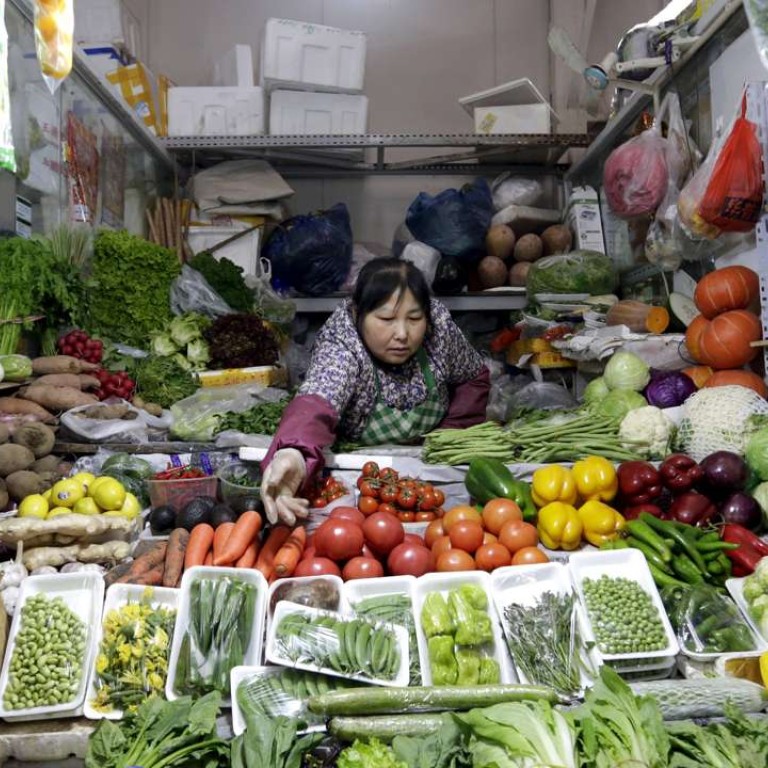
China’s soft inflation data for March leaves policy door open for further easing measures
China is to experience moderate consumer price inflation this year which will allow authorities to keep accommodative monetary easing policies in place to help pump up economic activity, analysts said following the release of consumer and producer price data for March.
“Continued normalisation in food prices, plus sluggish non-food price inflation, means that full-year CPI inflation will likely come in near the government’s 3 per cent target for 2016, leaving the People’s Bank of China with ample room to ease further and support growth,” Julia Wang and Jing Li, two economists at The Hongkong and Shanghai Banking Corporation, said in a research report.
HSBC is forecasting the People’s Bank of China will lower interest rates by 50 basis points and lower the proportion of funds banks must set aside as reserves by 350 basis points, as part of efforts to ensure annual economic growth at 6.7 per cent this year.
J.P. Morgan also believes the PBOC will further lower interest rates and the required reserve ratio this year. They forecast one cut to interest rates by July and three more cuts to the required reserve ratio throughout the course of the year.
March’s CPI inflation printed at 2.3 per cent, unchanged from February and lower than market consensus of 2.4 per cent to 2.5 per cent. Producer prices contracted 4.3 per cent for the month on year, compared to a contraction of 4.9 per cent in February. Market expectations were for PPI of negative 4.6 per cent. The March figures showed factory gate prices had been in deflation for 49 months in a row.
A closer look at the CPI data shows vegetable prices surged 35.8 per cent year on year, while pork prices jumped 28.4 per cent. Core inflation, which excluded food prices, rose only 1.5 per cent year on year.
The pork price surge was largely due to a supply shortage which could last until October. Vegetable prices are expected to cool, as much of the surge in price is believed to have come about because of cold weather early this year, according to BNP Paribas
Barclays Bank expects full-year CPI inflation to stand at 2.2 per cent, while J.P. Morgan estimates 2.3 per cent, both are below the government’s target of 3 per cent.
The PPI deflation, which showed signs of easing in March, is largely driven by demand for building materials and steel prices amid strong home sales, however its believed the demand surge could prove fleeting as new restrictions to control prices also dampens construction activity, BNP Paribas said.
“We think disinflationary, or deflationary pressures remain despite food-price driven inflationary pressures in the short term, and we view the recent uptick in food inflation and housing-related items to be transitory,” Barclays analysts said.
Other analysts echoed concerns that deflation will likely deepen this year.
“It is still too early to conclude that China is now out of deflation. In fact, the ongoing industrial restructuring and further capacity cuts this year are expected to weigh on growth….Therefore continued policy easing is critical to ensure that the recovery is sustained,” HSBC analysts Wang and Li said.

